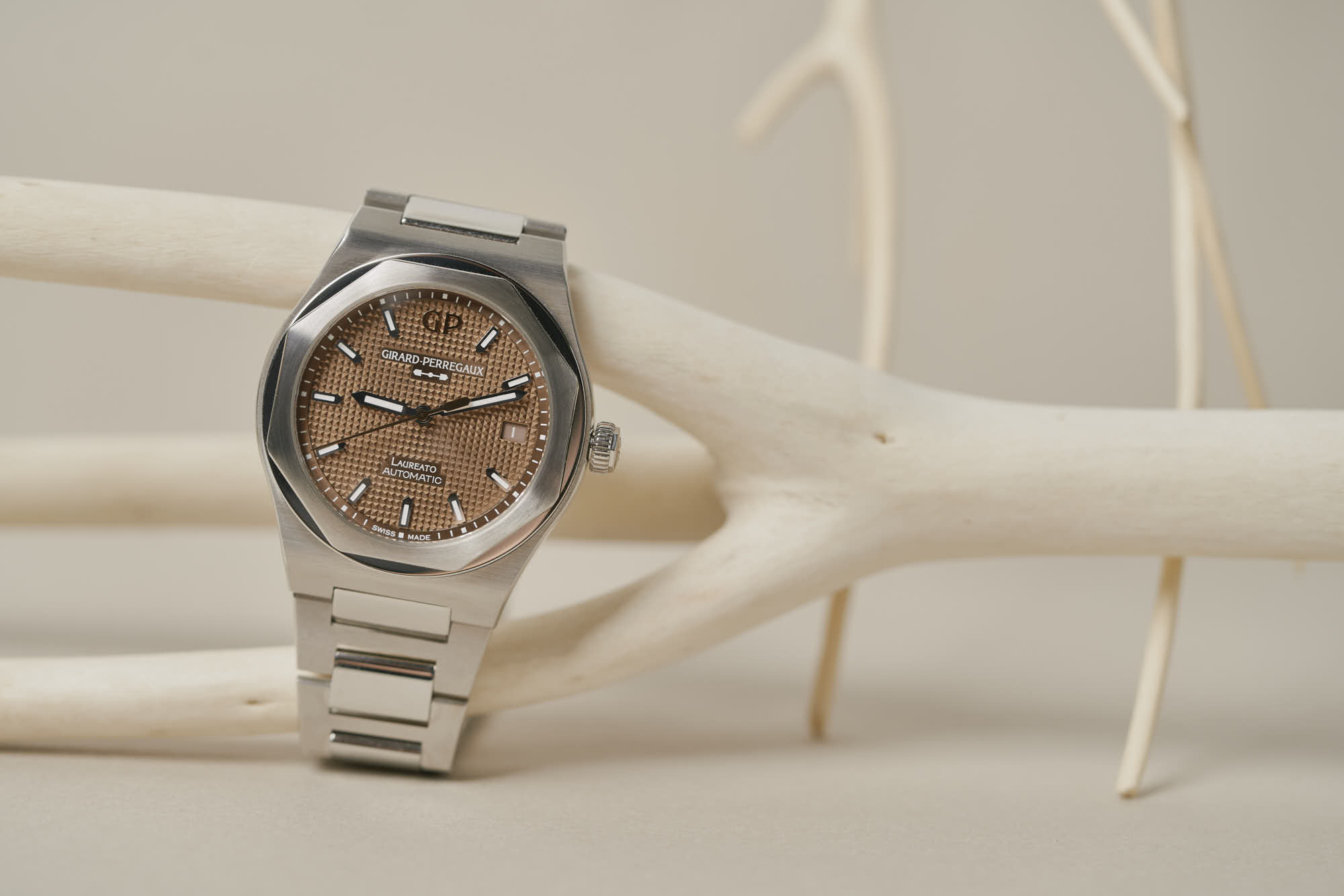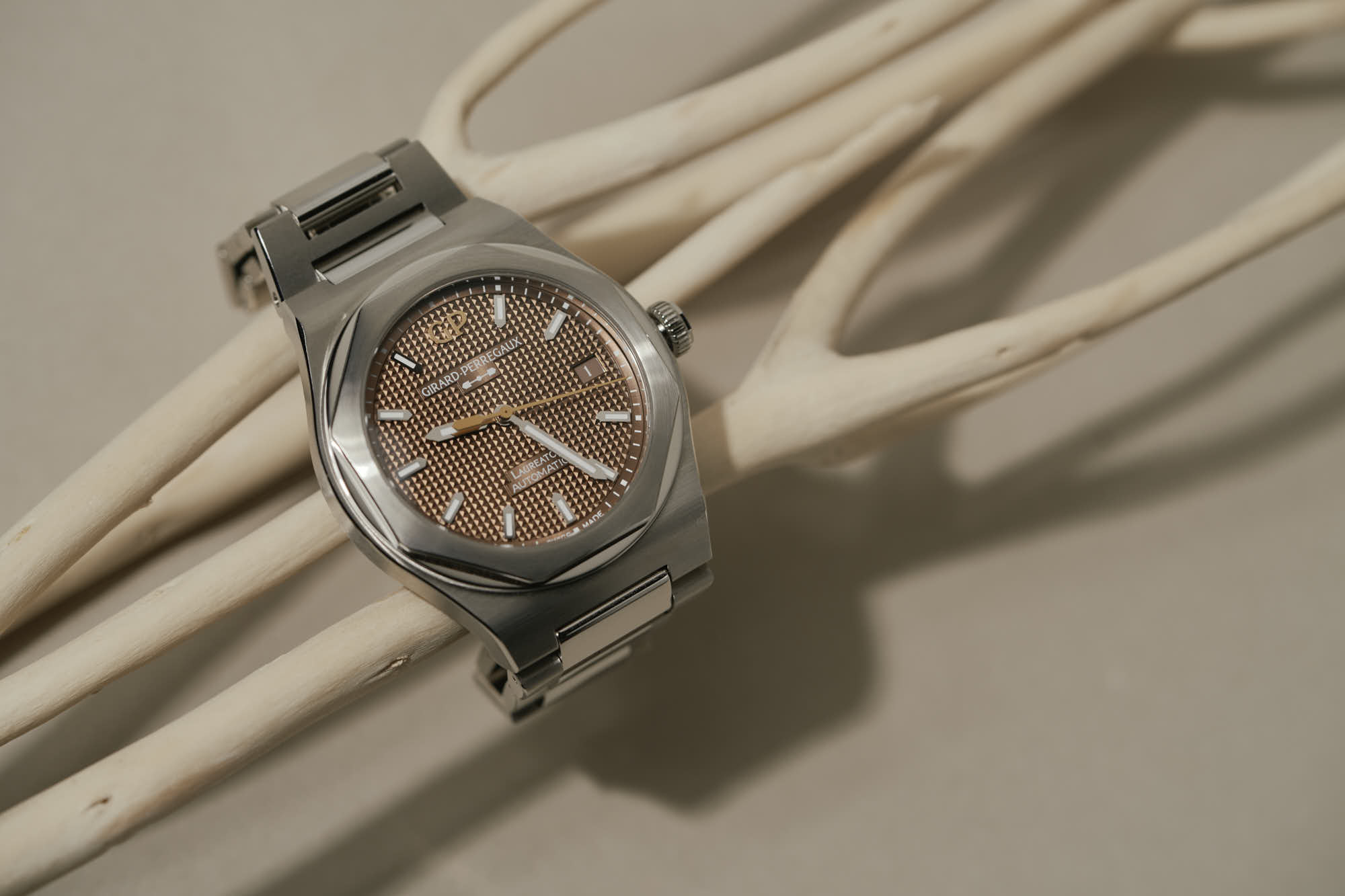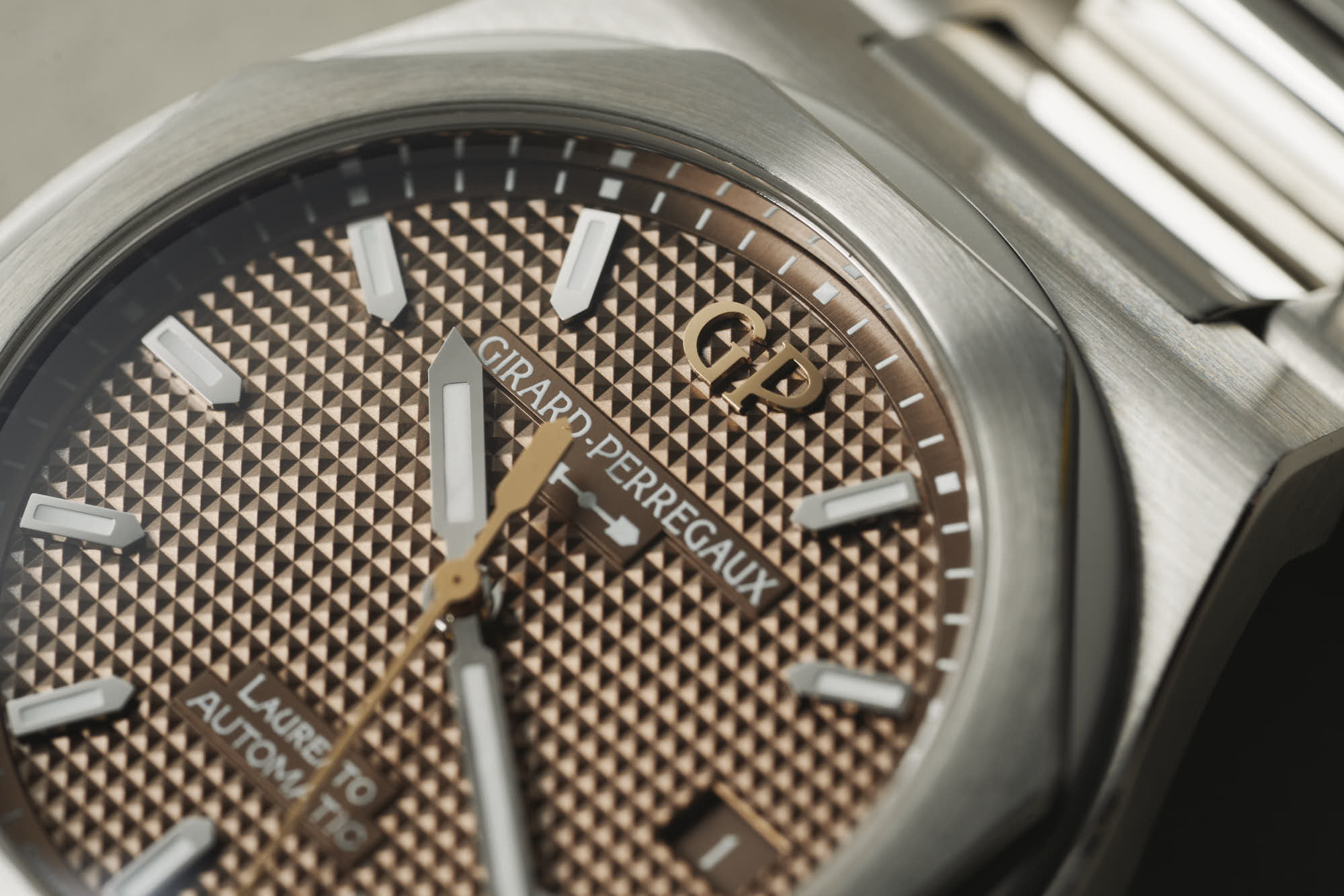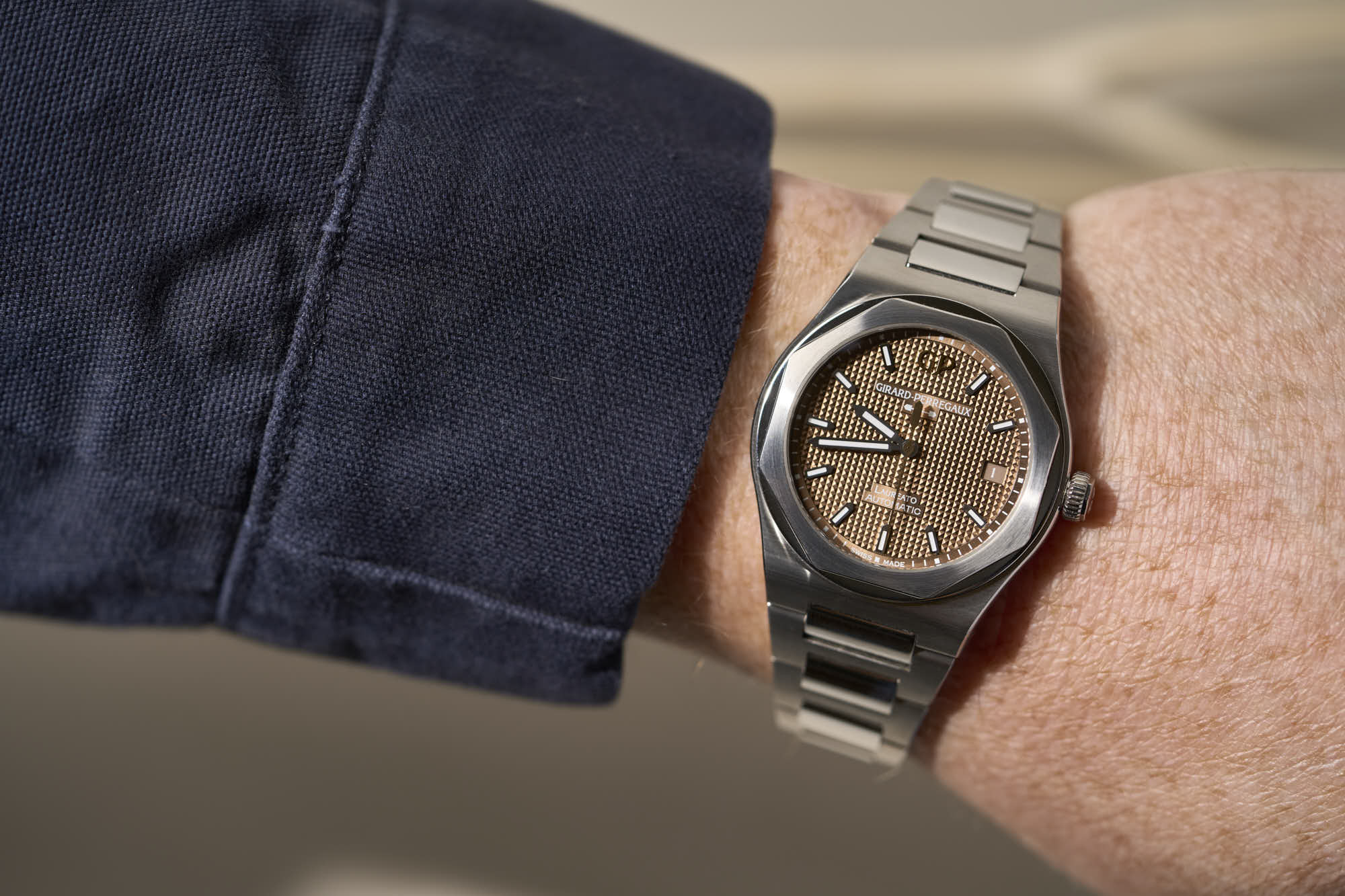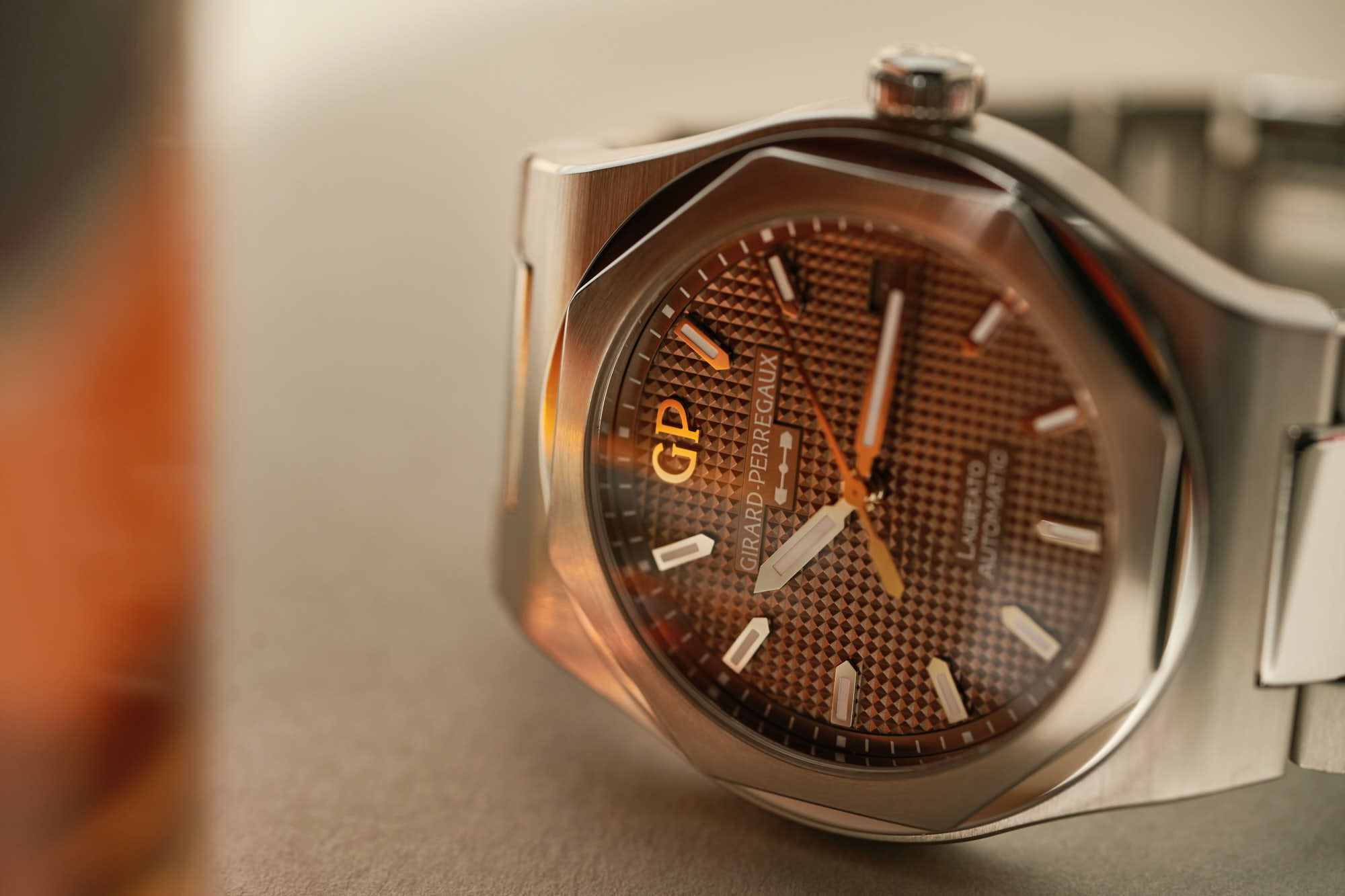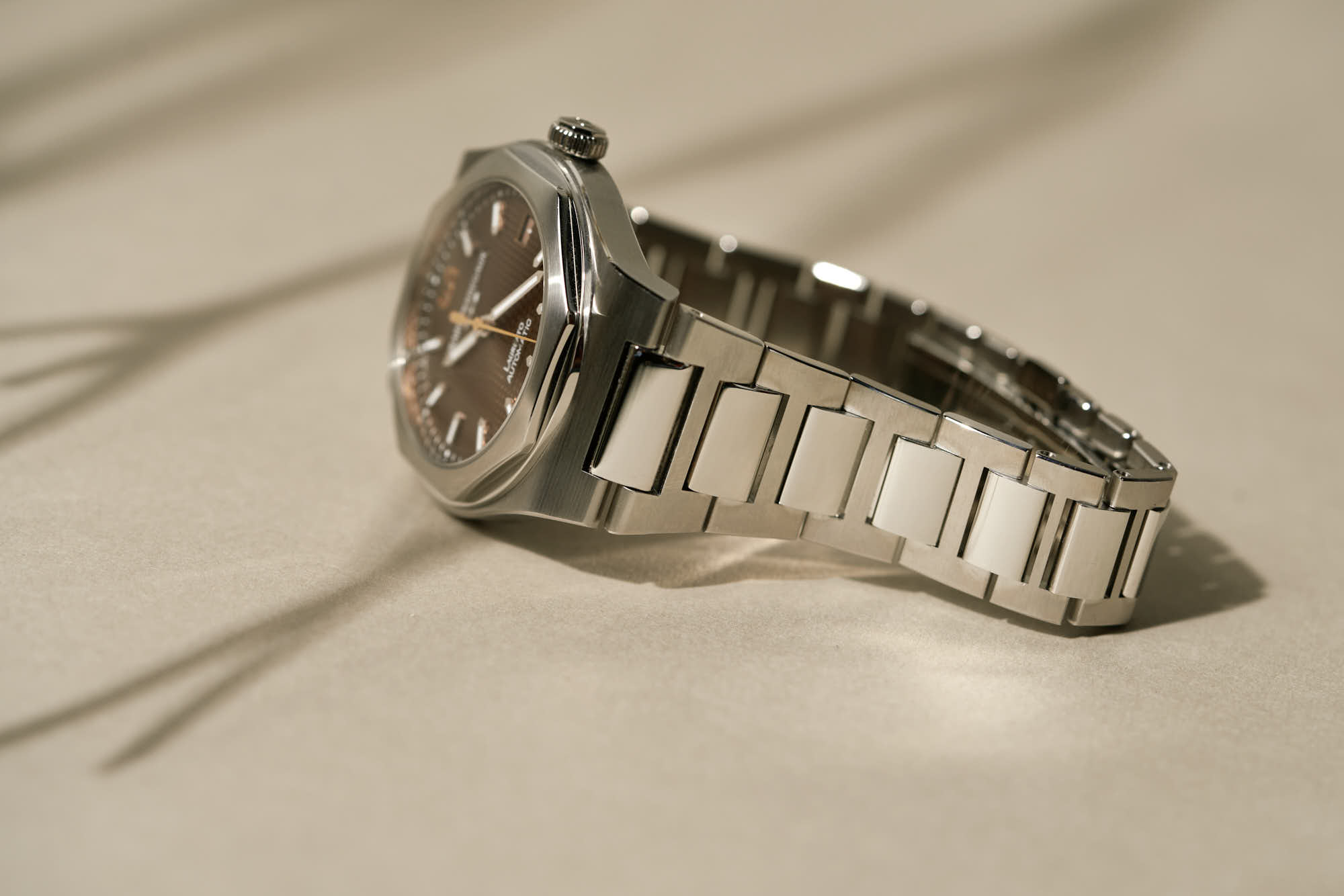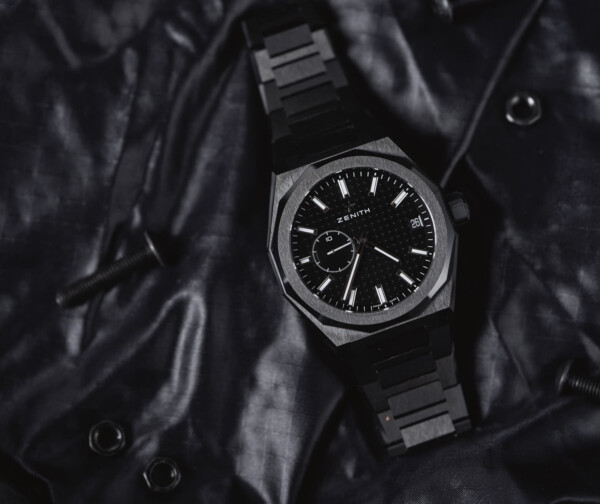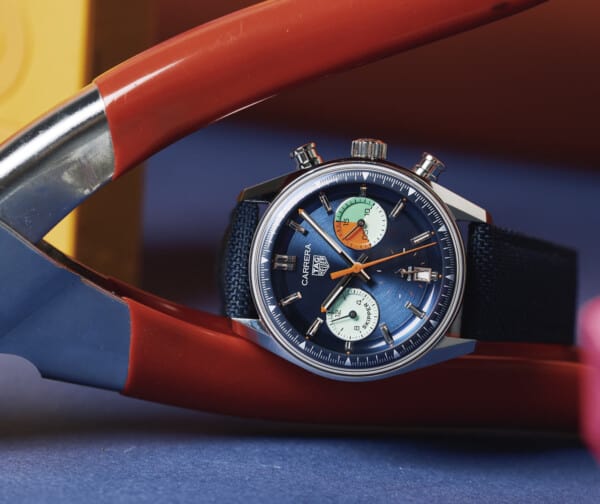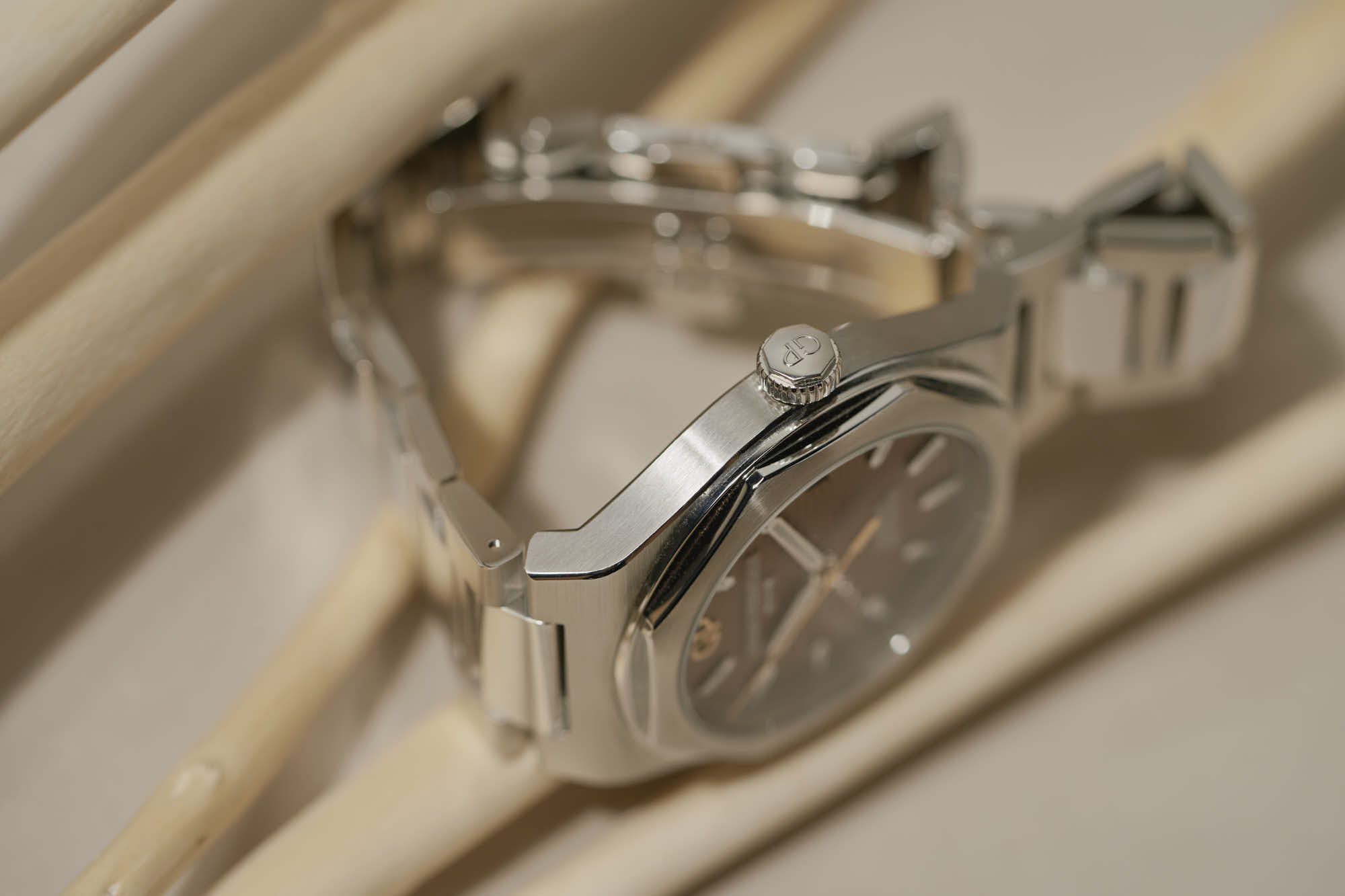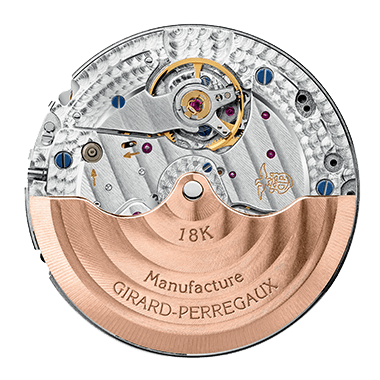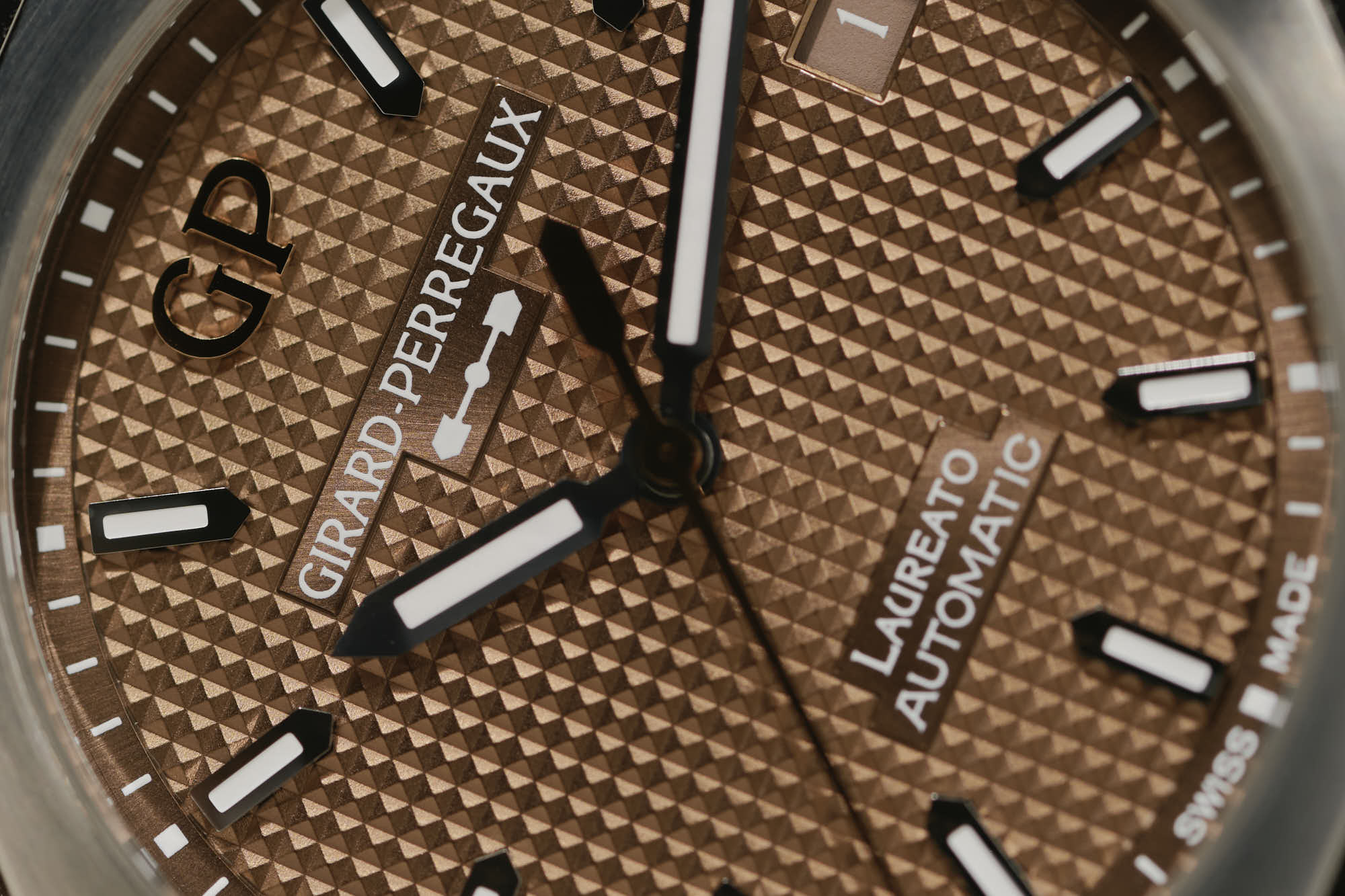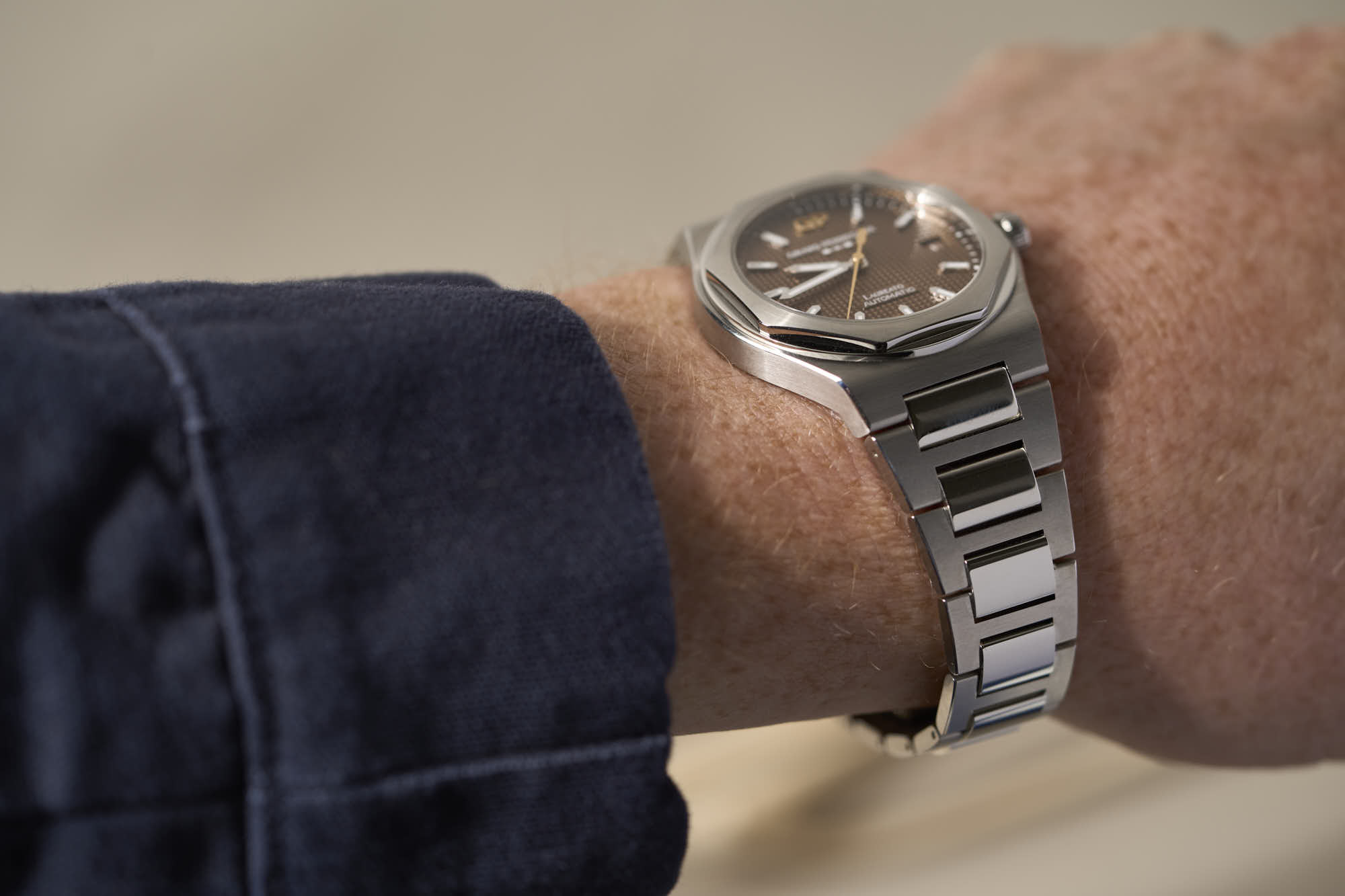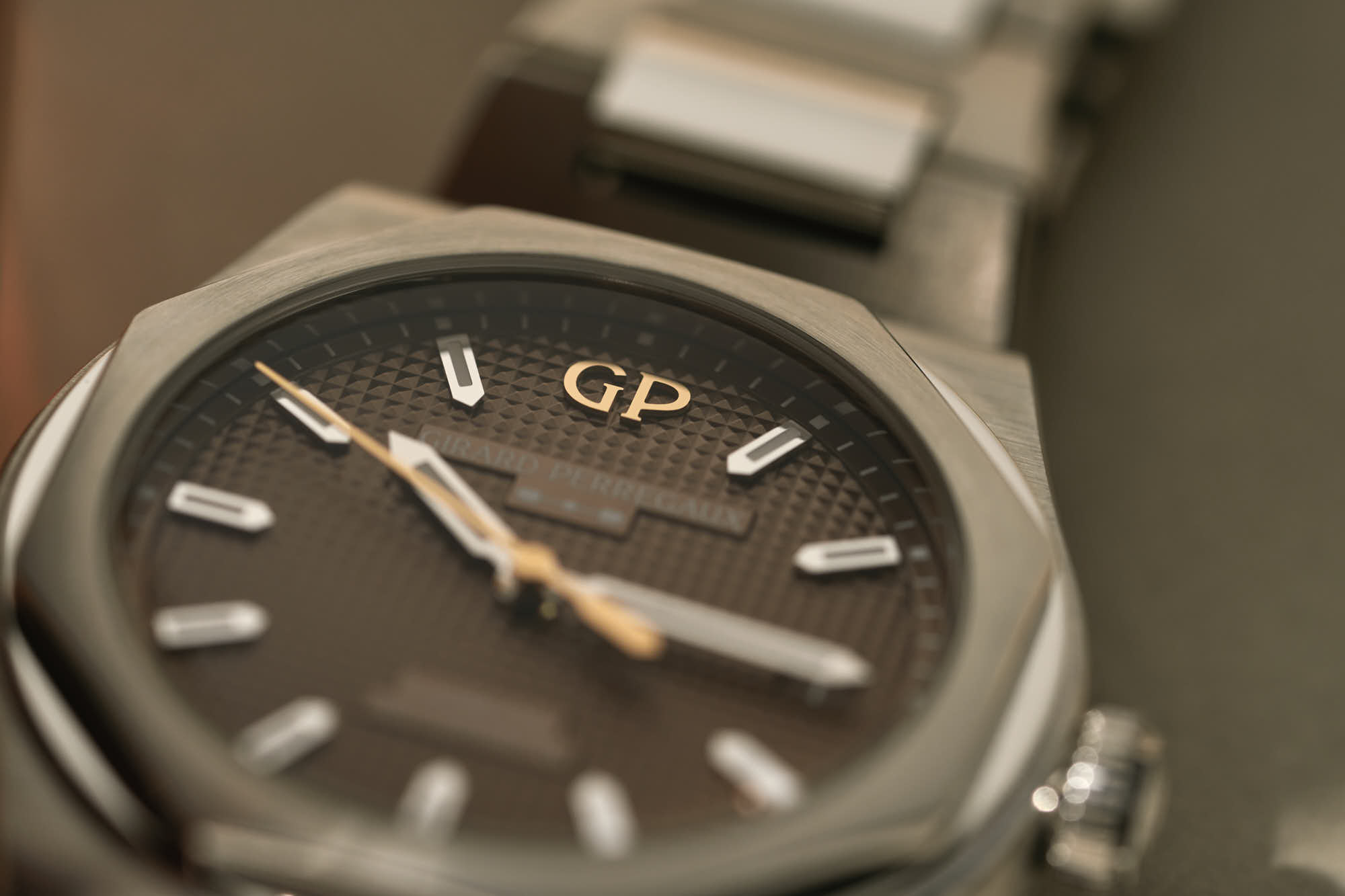There’s not much left to say about the resurgence of the integrated bracelet sport watch and the many modern iterations we’ve seen on the theme. Some have history, many more don’t, and it certainly hasn’t gotten any easier to decipher the unique elements that make one stand out from another. I’d argue that this comes down to execution which, when paired with a historically relevant and idiosyncratic approach, tends to produce the best example of the genre. Though that’s not a rule, merely a subjective observation. One of the more peculiar examples of this is the Girard-Perregaux Laureato, a watch that was released smack in the middle of the ‘70s, designed by an Italian architect, and has experienced a slightly tumultuous lineage, all leading to this graceful 38mm reference with copper dial.
The Laureato has an interesting and varied history, yet is often absent from the discussion around great sport watches of the ‘70s. It wasn’t designed by Gerald Genta, like the Royal Oak, Nautilus, and Ingenieur watches of the same era, but that doesn’t mean it doesn’t have a great origin story. Similarly to those other watches, the original design holds up remarkably well today, and Girard-Perregaux has preserved the core of the Laureato admirably, though some less than flattering eras to boot.









 Featured Videos
Featured Videos




